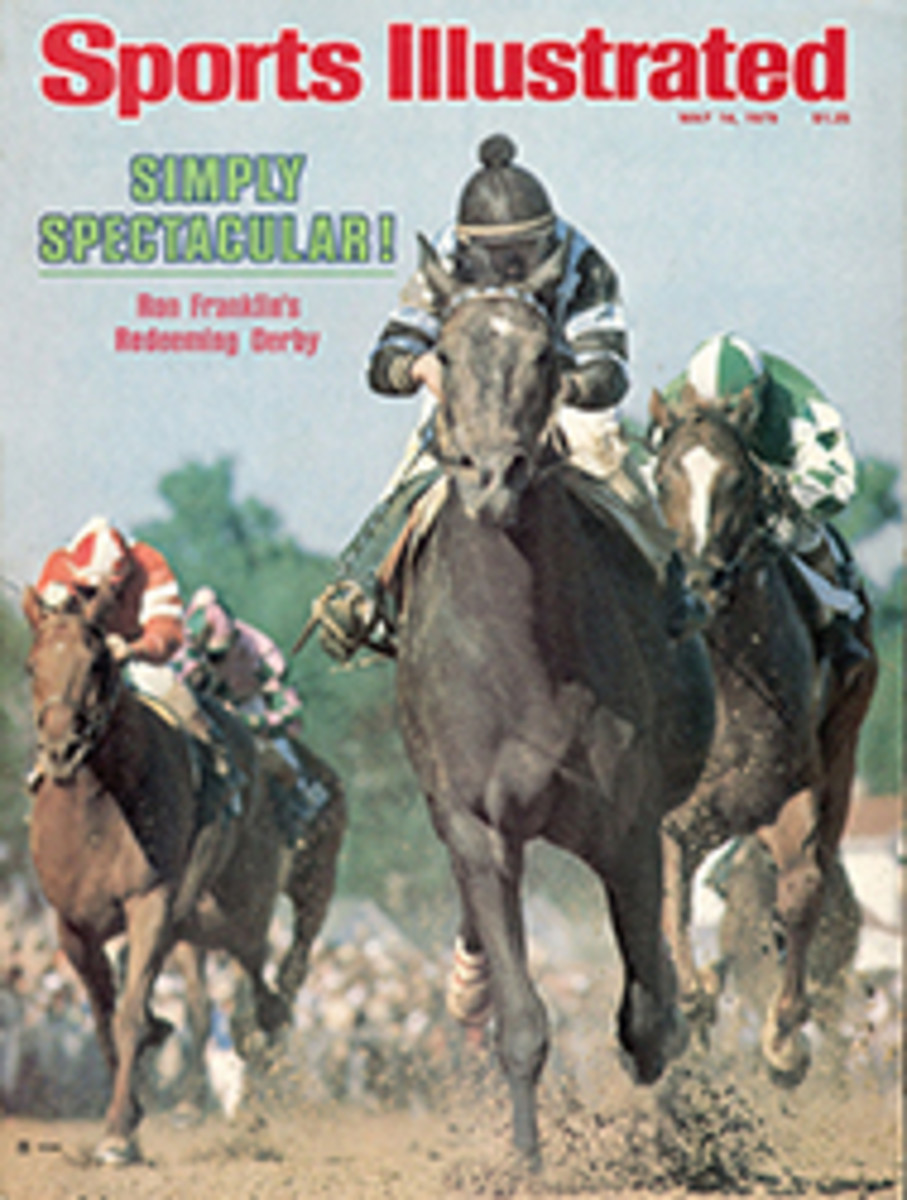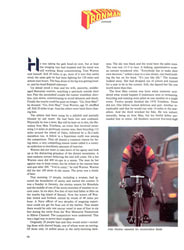
LIKE HITTING HOMERS, HITTING HIGH NOTES IN OPERA TAKES ATHLETIC SKILL
Opera singers, athletes? Those paranoid, overpampered, overweight bags of air who won't go outside for fear of catching a cold, who speak in monosyllables for fear of tiring their voices, who flee the room when someone takes out a cigarette? Dancers, yes, now they could be called athletes. After all, they move around, they even pick people up. But singers?
People speak of a singer's musicality, his subtle phrasing, his feeling for a song. Never do they mention his athletic ability. And even when they speak of a singer's power, they don't usually equate it with physical strength. But the fact is, opera is extremely demanding physically, and a good opera singer must possess many of the same qualities as other good athletes: strength, coordination, stamina. His playing field may be a stage, his uniform a fancy costume and his warmup suit a five-foot scarf, but a singer is, in his way, as much an athlete as Terry Bradshaw or Reggie Jackson.
Several singers have proven their talents in both fields. Paul Robeson, the bass-baritone, was a two-time All-America end at Rutgers and could have gone on to the pros. Baritone Robert Merrill was a star pitcher in high school who played semipro ball to help finance his education. Tenor Franco Corelli was an amateur boxer in Italy and a champion rower, and today he runs two to five miles every morning in Central Park.
Don't misunderstand me. Athletic ability isn't an end in itself in singing any more than in football. The final goal of singing, the product we wish to hear, is good tone well used. However, to produce that tone a certain amount of athletic ability, a certain amount of strength, coordination and stamina is a necessity.
Strength
To understand how and why strength is needed in singing, it is first necessary to understand how you sing. Singing, like talking, is the result of air passing through two folds in the throat, commonly called the vocal cords. The air provided by the lungs causes the cords to vibrate, and the result is sound. This sound picks up color and tone by resonating through three cavities in the head: the pharynx, the larynx and the mouth. Volume or power in a voice is increased by increasing the resistance to the air by contracting the upper abdominal muscles. This resistance forces the air through the cords, producing the vibrant, non-breathy tone associated with good singing.
Resistance isn't foreign to athletics. When we run, we depend on the resistance of the ground. When we swim, we push against the resistance of the water. For a singer this resistance is within his own body.
The best singers, the strongest singers, usually are those who have a wide range of notes. Most study seven or eight years before they are ready to sing opera, and many of their exercises consist of a kind of vocal weight lifting designed to strengthen throat and diaphragm. Veteran opera singers often develop big chests and incredibly strong diaphragms. Caruso, it is said, could move a piano by extending his diaphragm.
Luciano Pavarotti is probably the finest tenor now singing. He is certainly the biggest. "To sing you need the strong body of an athlete," he says. "Especially in the diaphragm you need tremendous strength." As a youth in Italy, Pavarotti played soccer. Today he does at least an hour of physical exercise every day.
Sherrill Milnes, who may be the finest baritone, says, "Singing is almost more muscle than musicality." Milnes ran cross-country in high school, and today he works out four to six times a week with a set of pulley weights. Though he is in trim condition, Milnes says, "Even singers who don't look physically fit, and probably aren't for other exercises, have enormous amounts of power, strength, control and discipline, all of which one must have to sing."
The strength required to sing is the reason you find so many mesomorphs in opera—the same body type usually found in football or weight lifting. Mesomorphs are bulky and muscular and tend to gain weight easily. A number of opera singers are obviously no exception.
Consider four of the top male singers in the world. Placido Domingo stands 6'2" and weighs 225 pounds; Milnes is 6'2", 212 pounds; Martti Talvela 6'7", 250 pounds; and Pavarotti 6'1", about 240 pounds. That's a front four Bear Bryant would covet.
Coordination
The second requirement of good singing is coordination. In baseball and basketball, they speak of hand-eye coordination—for example, hitting a ball where the eye perceives it to be. In singing, there is a similar coordination that might be called ear-throat coordination—the ability to make the throat reproduce notes heard by the ear.
When people are described as tone-deaf, it doesn't mean that they don't hear the notes. Indeed, most tone-deaf people can readily hear and enjoy music performed by others. However, they lack the coordination to reproduce the sounds in their own throats. Most people have this coordination naturally, and with a little effort can master it enough to enjoy singing the way most people can master hand-eye coordination sufficiently to play a little ball. A professional singer, though, requires considerably more coordination. He must be able to find his note when the orchestra is playing something quite different; he must be able to negotiate strange jumps from high to low; and he must be able to hear his part as the harmony of another singer's part.
In addition, opera singers have a bag of athletic tricks that Henry Pleasants in his book The Great Singers calls "sheer virtuosity in the athletic sense." They include: portamento (sliding from one note to another, usually hitting all the notes in between); appoggiatura (a quick note that gives grace or elegance to a melodic or harmonic progression), roulade (a quick succession of notes up and down the scale), trill (a rapid, deliberate wavering back and forth between two notes), messa di voce (a singer begins a note softly, swells it to the loudest possible sound, and then diminishes it back to the original softness).
All of these techniques require practice and study and, I think, natural coordination. The stronger a singer's voice, the more difficult the tricks are to execute. Here opera singers face the same dilemma that participants in a number of sports face. For example, the bigger a football player, the harder it is for him to maneuver. On the other hand, though he may be more agile, a smaller man may not have enough strength to be effective. Opera, like football, is best as a union of opposites. A singer must possess as much strength as possible while maintaining full coordination or control of the voice.
Nowhere in opera do strength and coordination face a more difficult test than in the high note—that leap into the upper stratosphere of the human voice. Pavarotti, whose resplendent high notes have earned him the nickname King of the High Cs, says, "For a high note, you need extra strength, an extra push of the diaphragm. For a big voice you need incredible muscular power to go to the top. Birgit Nilsson is very strong. The same with Joan Sutherland. She's a very athletic girl."
Stamina
There are really two kinds of stamina in sports: one involves how long and well an athlete can perform in a specific game or event, the other how long and well an athlete can perform over a career. To those who don't know the effort that goes into singing, it may seem strange that an opera singer who sings only half an hour to an hour in an entire opera, requires two or three days to recover. However, opera demands not only strength but also sustained strength, sustained energy.
"A singer must give his utmost every time he sings," says Milnes. "At the end of 25 minutes of singing, I come offstage puffing like a steam engine and dripping water. Although I'm convinced that cross-country running is the most painful sport there is, singing requires as much stamina. You often have to sing with your lungs aching for oxygen when the singing is demanding and there are few rests. You have enough air to sing, but your lungs are full of carbon dioxide and your body is hurting for oxygen. Psychologically, you reach the same state you do in running. You don't want to keep on going. You want to lie down on the grass and rest."
To understand why a singer needs two or three days to recover, consider a starting pitcher, who also relies largely on one set of muscles. The pitcher exerts those muscles to their maximum during the game. And although he may actually be pitching for only 15 or so minutes, he needs a three- or four-day rest. Now, if a pitcher throws too hard, too often and/or too young—meaning in junior high or high school—he can ruin his arm. But if he husbands his arm during the first critical years of pitching and takes care to give it proper rest, he may enjoy a long and prosperous career. The same applies to a singer. There are singers who ruin their voices trying too hard at too young an age. On the other hand, there are those who sing on into their 50s. The George Blandas of opera have lasted into their 60s. And Jan Peerce is still singing at 74.
Here, of course, is where singing makes its departure from sports—age. In baseball, a player may be ready to play pro ball at 23, reach his peak at 29 and retire at 33. In opera, a singer usually isn't ready to perform until he is in his late 20s. He won't reach his peak until his mid-30s.
But opera also has this in common with sports. There is in every sport an aspect that may legitimately be called art. There is in every physical achievement a feeling of joy or pride in human accomplishment. Man is in many ways a slave to his body. He is hampered by physical limitations. He gets sick, he grows old, he eventually dies.
Singing as well as sport makes us forget that for a moment. They both show us man at his highest physical capabilities. When someone seems to sing or run effortlessly we are lured into believing that we are the masters of our bodies, that we can stretch and extend our limitations.
On rare occasions, I have heard singing so beautiful, so strong and so compelling, I couldn't believe that it came from the throat of a man. It seemed to come from outside of him. So it is when a high jumper clears a bar set at a height that seems beyond human capability to leap over, when a back eludes one tackle after another after another, and then suddenly is in the clear, high-stepping to the goal line.
ILLUSTRATION

